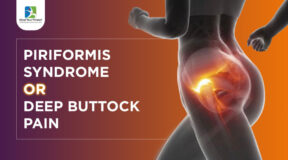Plantar Fasciitis is a common foot condition that affects millions of people each year. The pain caused by this condition can be debilitating and affect daily activities like walking and running. If you are experiencing severe pain due to Plantar Fasciitis. It is important to understand the condition, its symptoms, and how to find relief from the plantar fasciitis so bad I can’t walk.
What is Plantar Fasciitis?
Plantar Fasciitis is a condition that occurs when the Plantar Fascia, a thick band of tissue that connects the heel bone to the toes, becomes inflamed and painful. The Plantar Fascia is responsible for supporting the arch of the foot and absorbs the shock of impact when walking, running, or jumping. When the Plantar Fascia becomes overused or overstretched, tiny tears can develop, resulting in inflammation and pain.
Symptoms of Plantar Fasciitis
The most common symptom of Plantar Fasciitis is a sharp pain in the heel that is worse in the morning or after long periods of standing or walking. The pain is often described as a stabbing sensation that radiates from the heel to the toes. The pain may subside after a few minutes of walking but can return with prolonged activity.
Other symptoms of Plantar Fasciitis include:
- Swelling and redness in the heel
- Aching or burning pain in the arch of the foot
- Tenderness or tightness in the calf muscles
- Difficulty standing on tiptoe or flexing the foot
Treating Plantar Fasciitis
There are several treatments available to help relieve the pain caused by Plantar Fasciitis. The following methods may be used alone or in combination:
Rest and Ice: Resting the foot and applying ice to the affected area can help reduce inflammation and relieve pain. Ice should be applied for 15 to 20 minutes at a time, several times a day.
Stretching: Stretching the calf muscles and the Plantar Fascia can help relieve pain and improve flexibility. It is important to stretch regularly, especially before and after exercise.
Supportive Footwear: Wearing shoes with good arch support and cushioning can help reduce stress on the Plantar Fascia. Avoid wearing high heels or shoes with little or no support.
Orthotics: Custom-made orthotics can help support the arch of the foot and provide relief from pain. Over-the-counter arch supports may also be helpful.
Physical Therapy: A physical therapist can teach exercises and stretches to help reduce pain and improve flexibility.
Medications: Over-the-counter pain relievers such as ibuprofen or naproxen may help reduce pain and inflammation. Corticosteroid injections may also be used for severe pain.
Surgery: In rare cases, surgery may be necessary to release the tension on the Plantar Fascia.
Preventing Plantar Fasciitis
While not always preventable, there are steps you can take to reduce your risk of developing Plantar Fasciitis:
- Wear shoes with good arch support and cushioning
- Stretch before and after exercise
- Avoid high-impact activities on hard surfaces
- Maintain a healthy weight
- Gradually increase the intensity of exercise
Conclusion
Plantar Fasciitis can be a painful and debilitating condition, but there are treatments available to relieve pain and promote healing. Rest, ice, stretching, supportive footwear, orthotics, physical therapy, and medication are all methods that can help reduce pain and inflammation. It is important to seek medical attention if the pain persists or becomes severe. With proper treatment and prevention, most people with Plantar Fasciitis can find relief and return to their normal activities.





